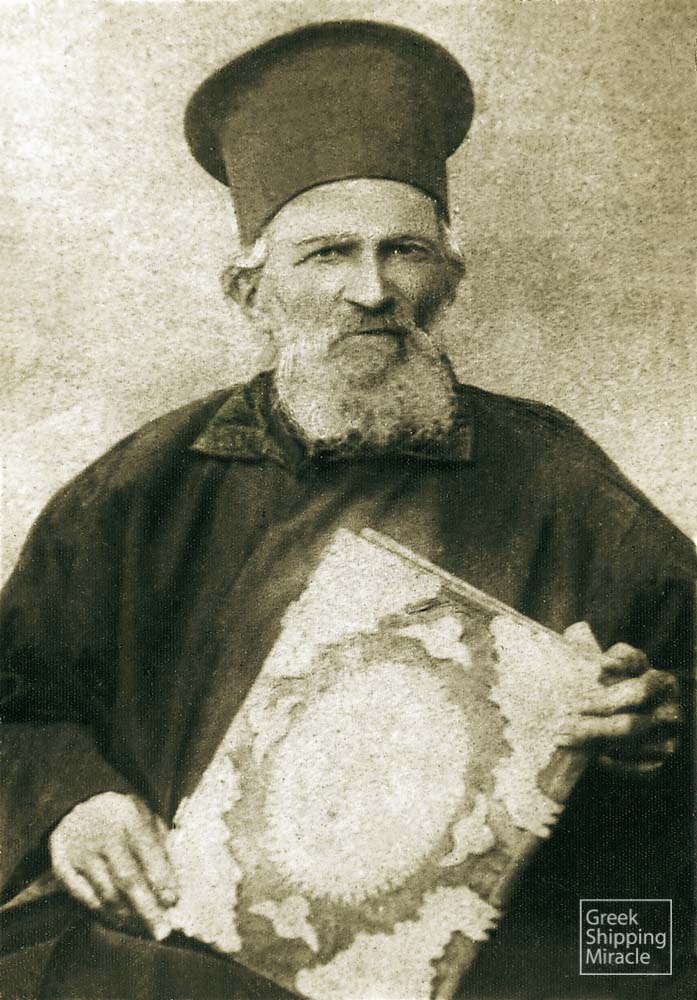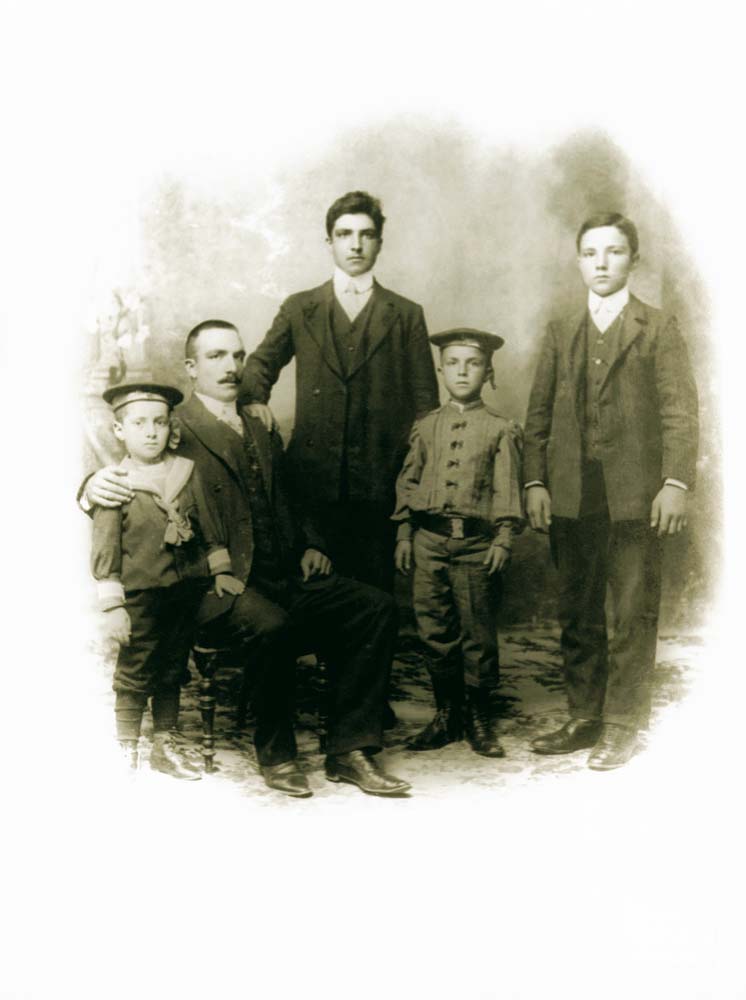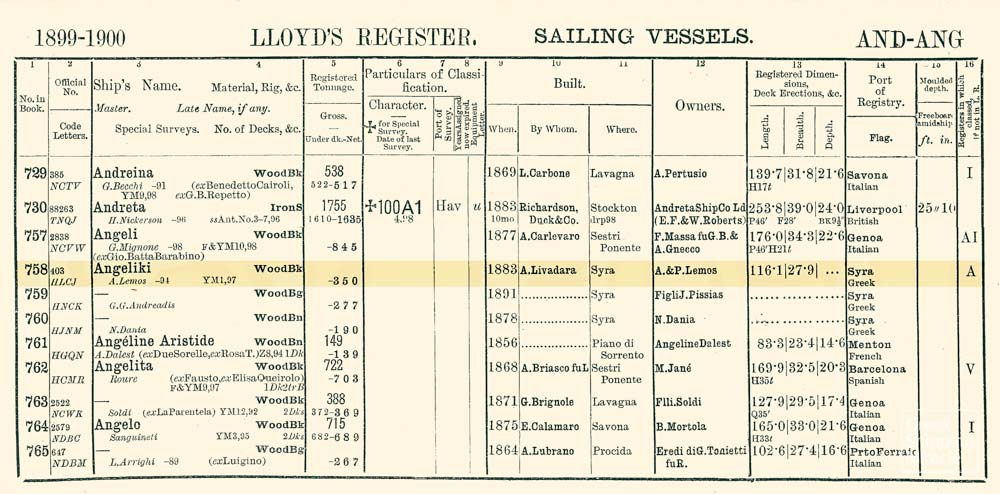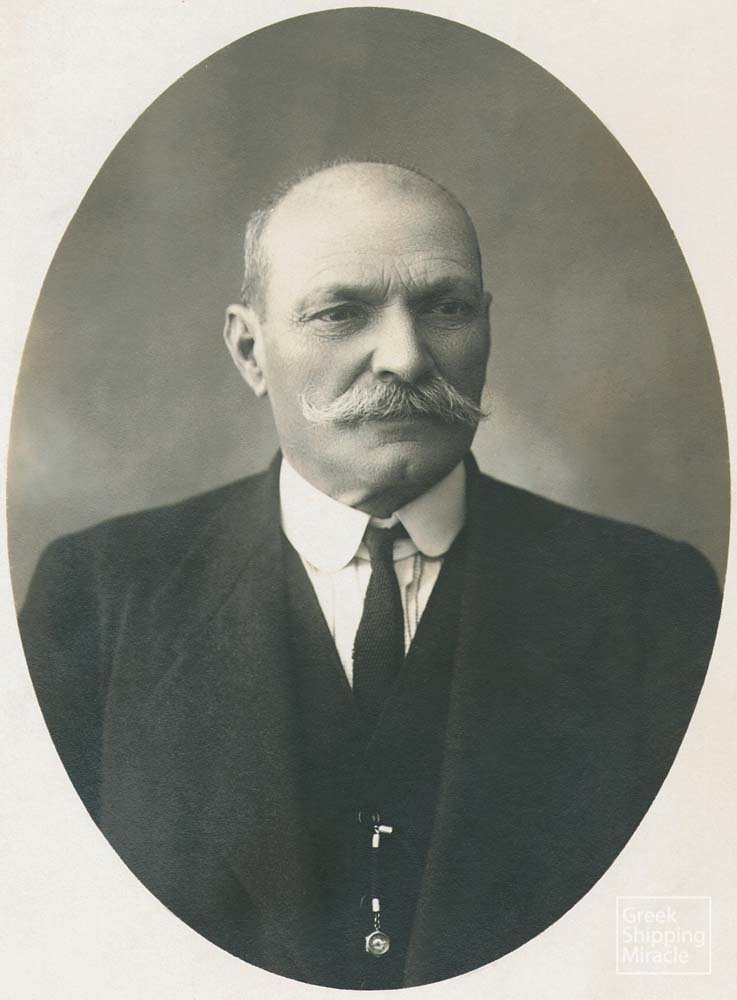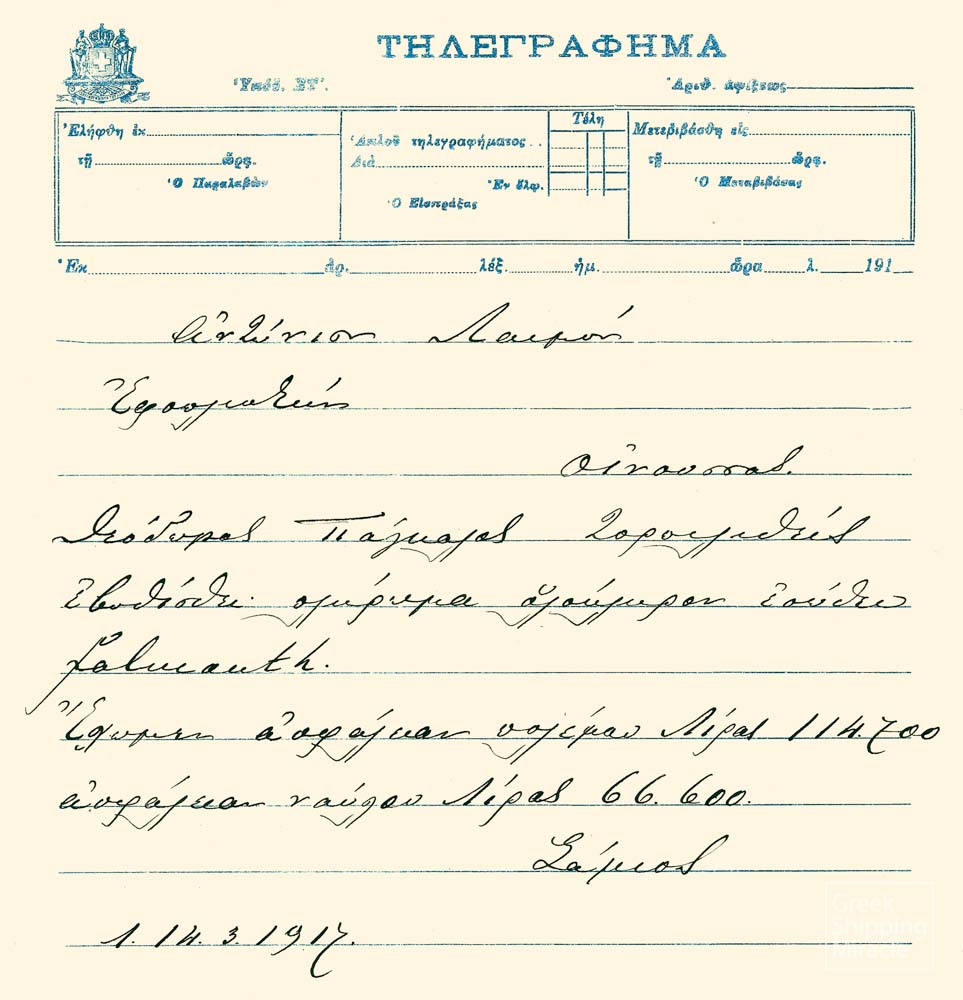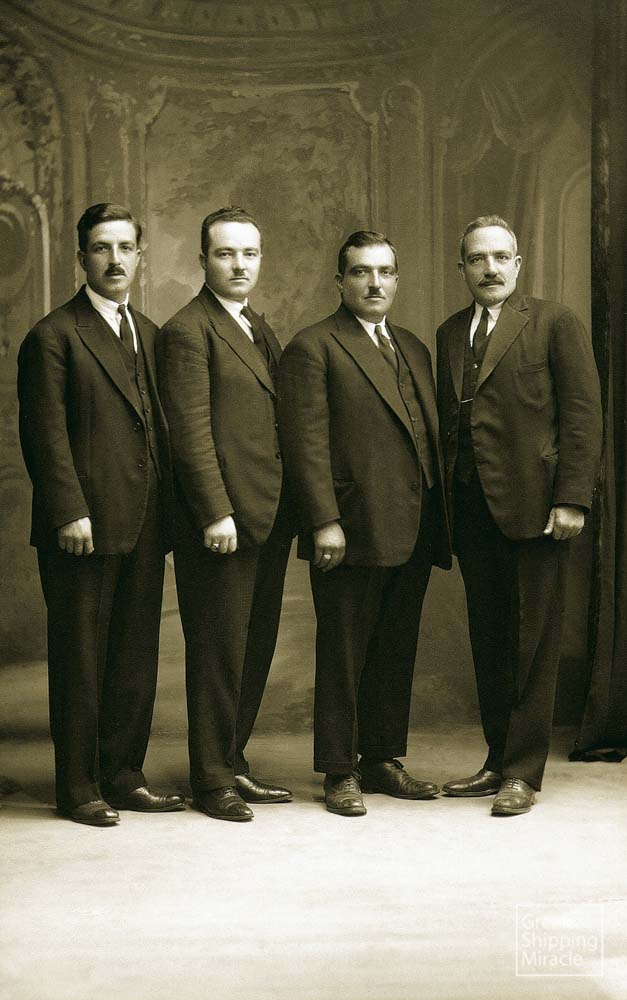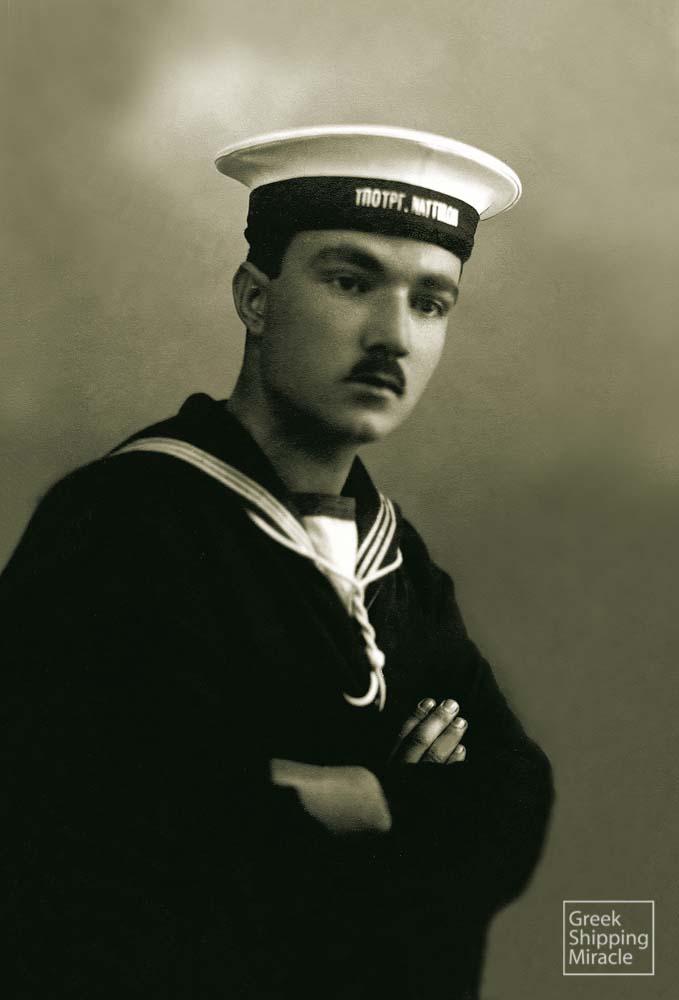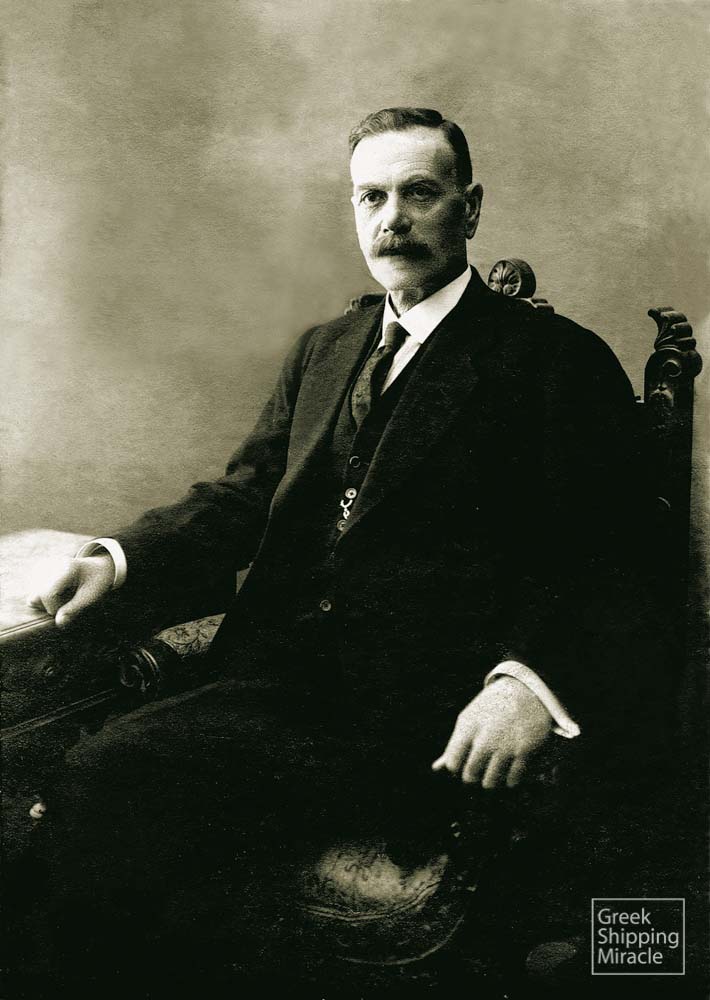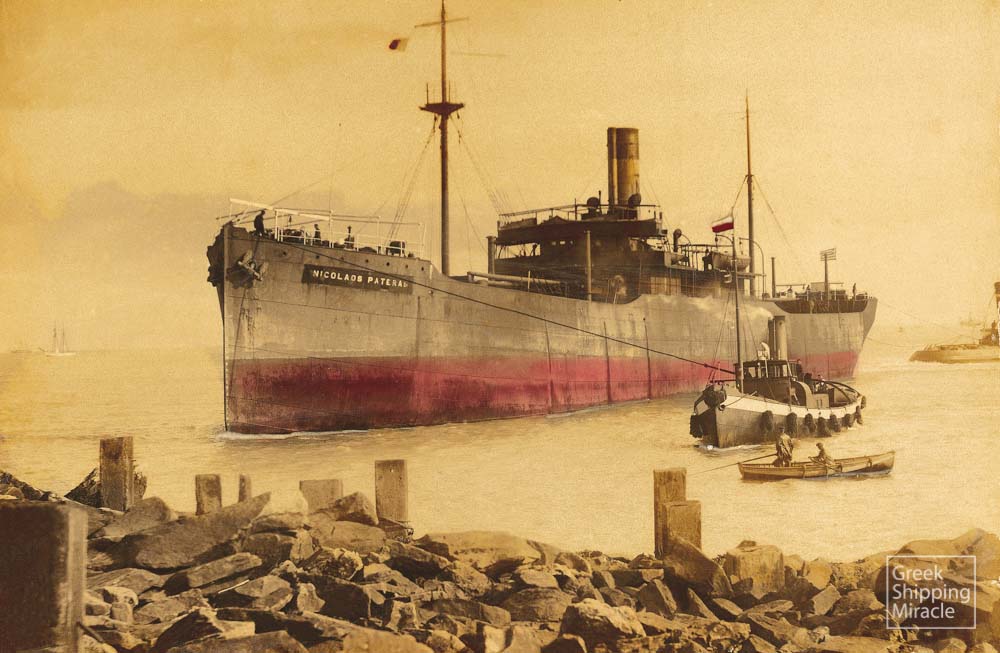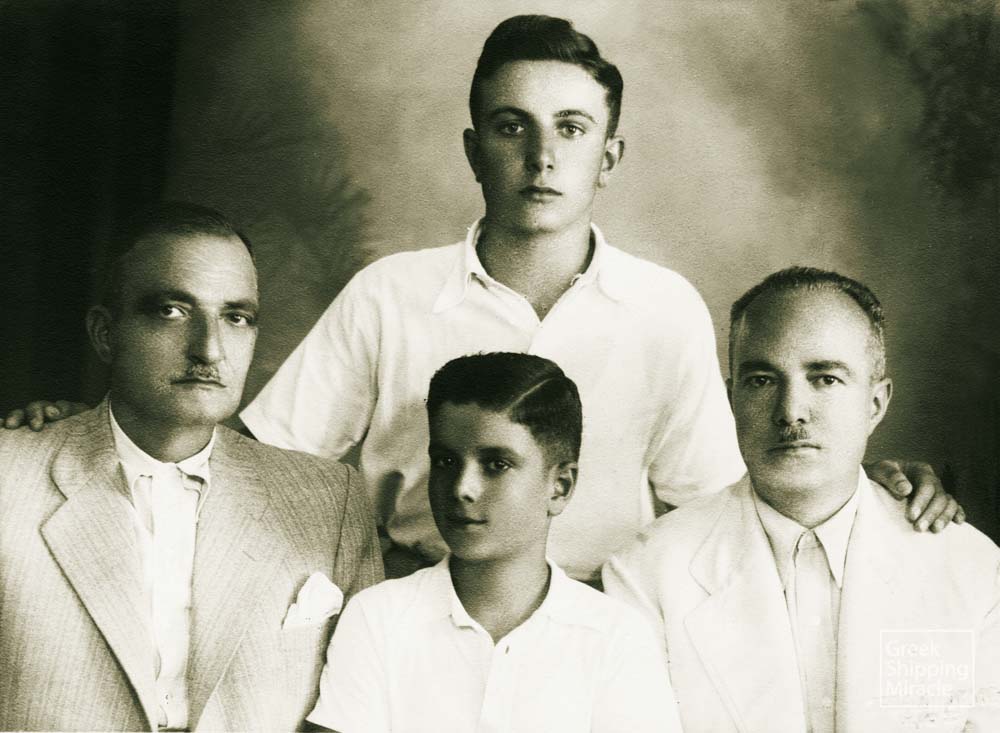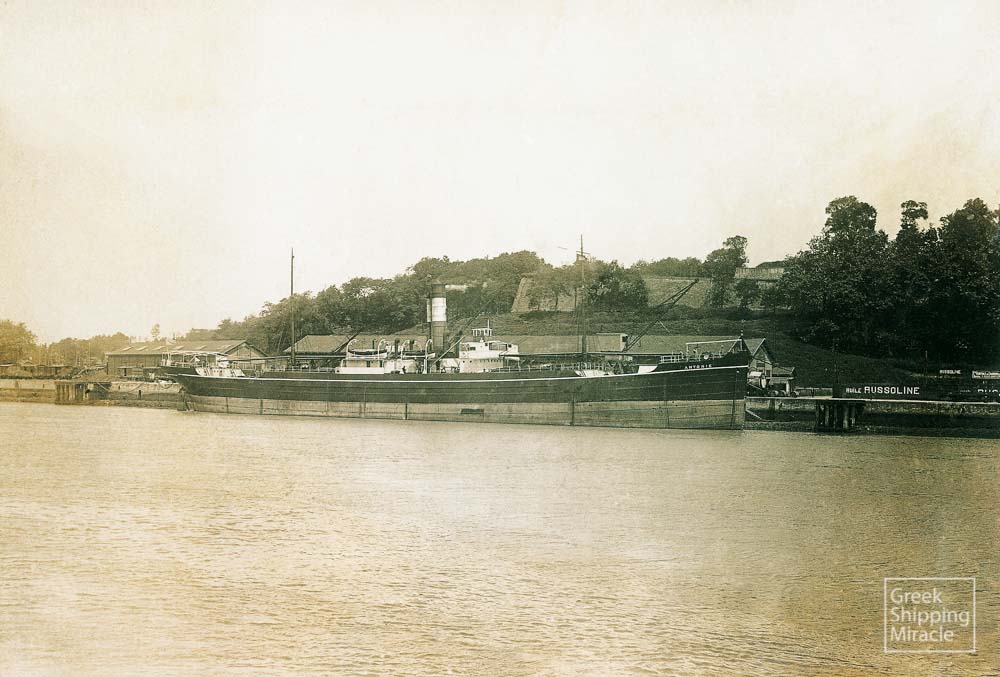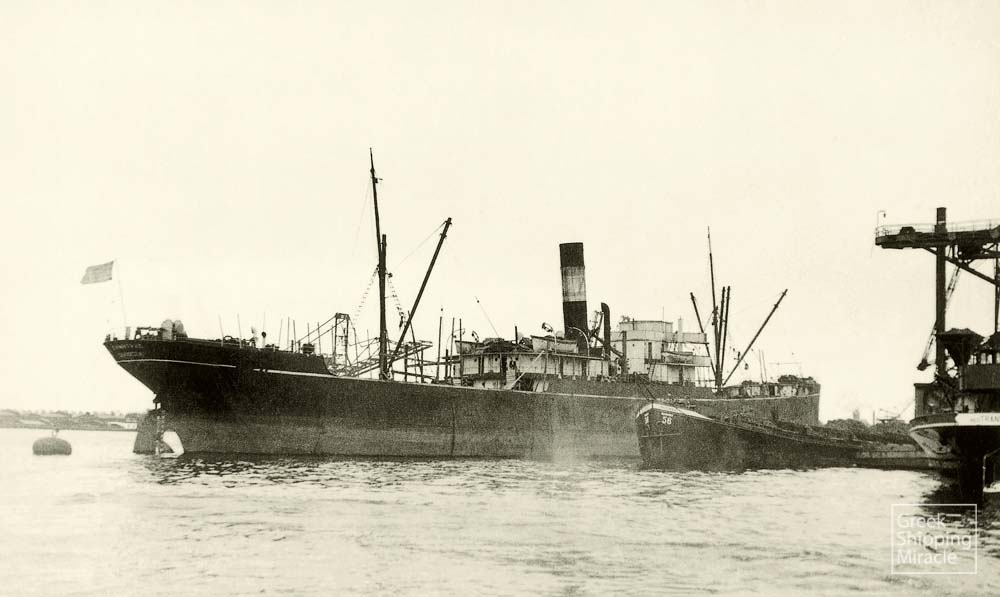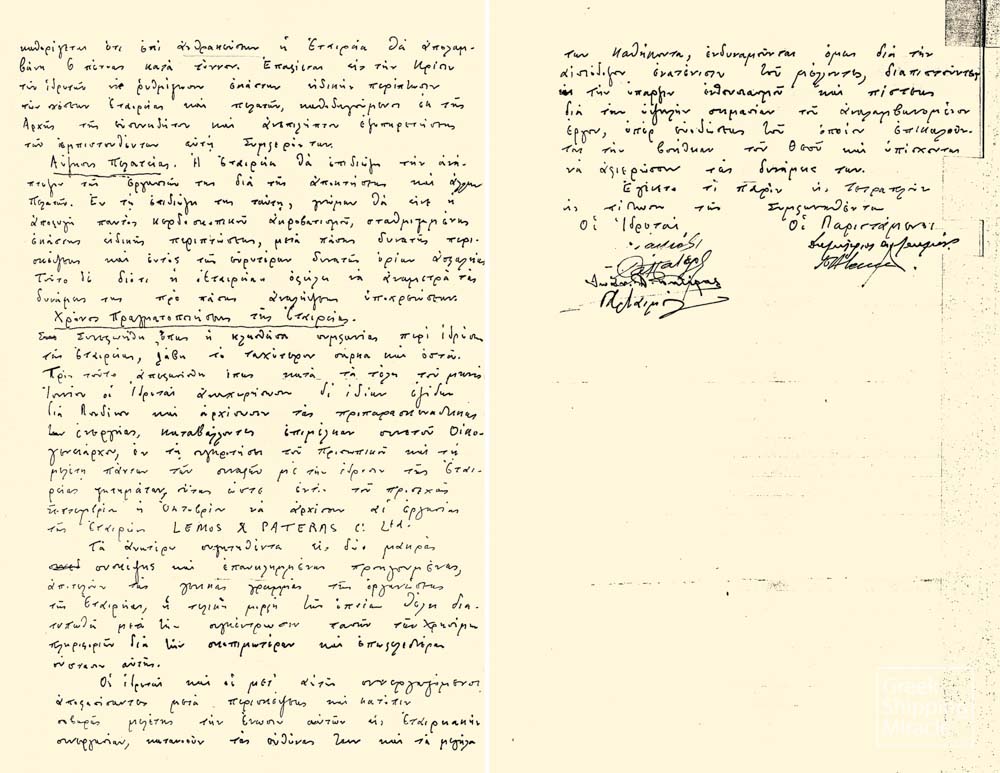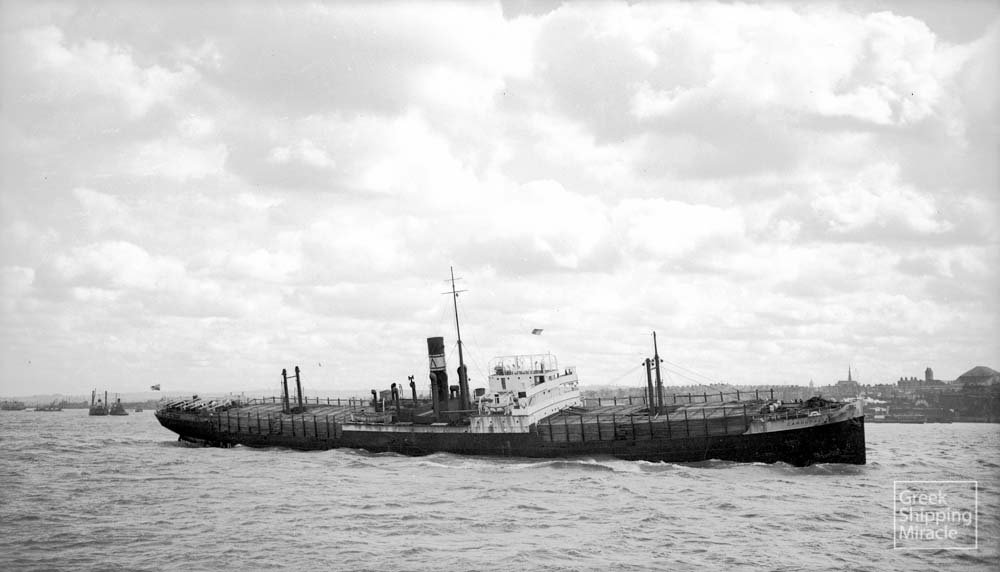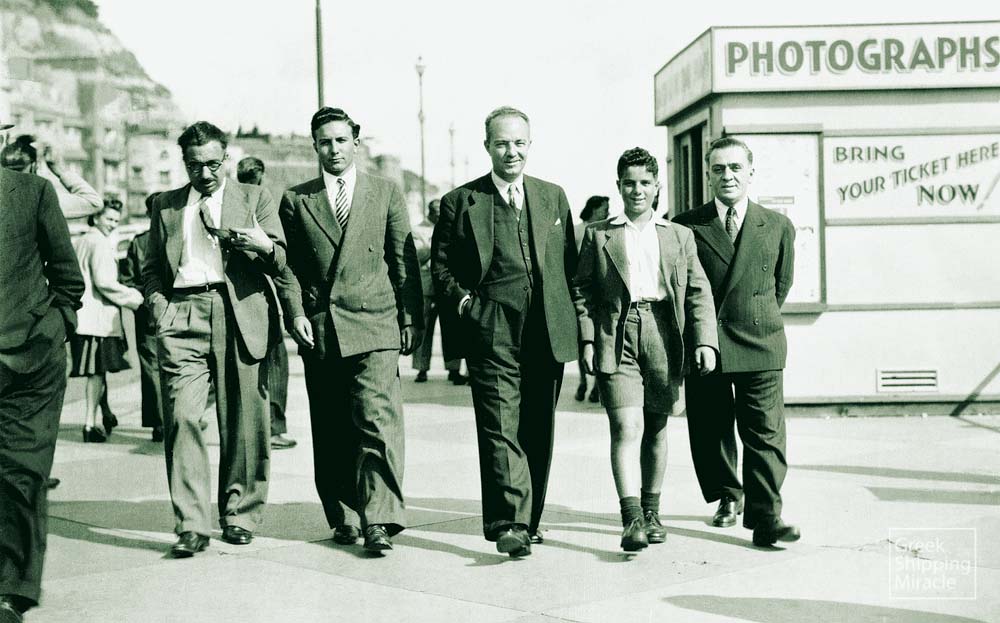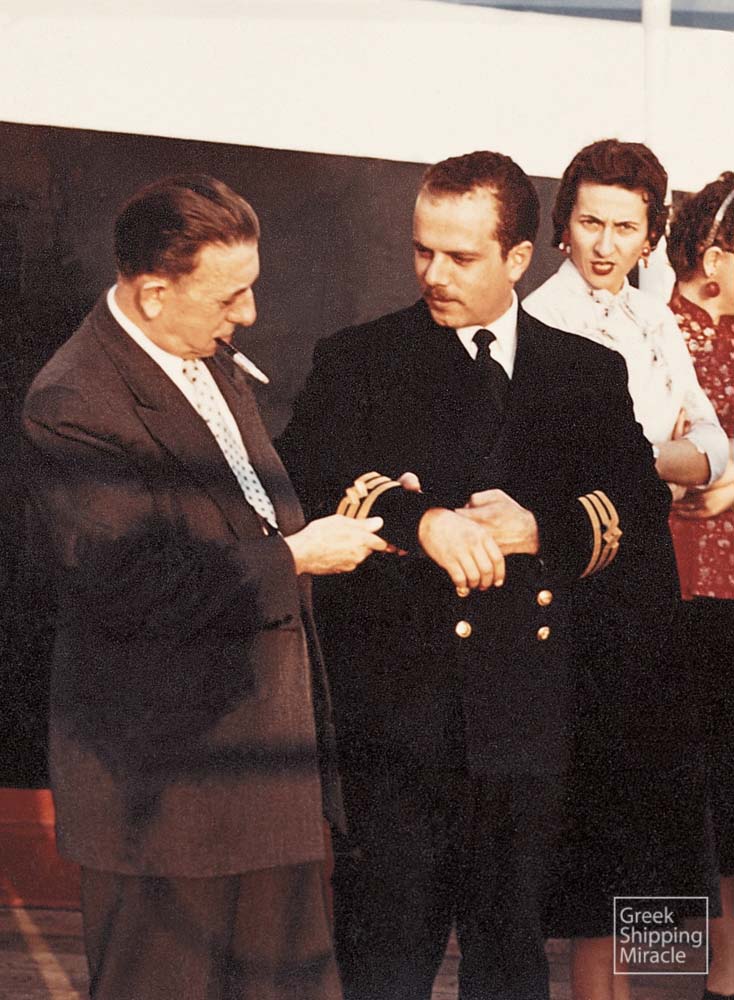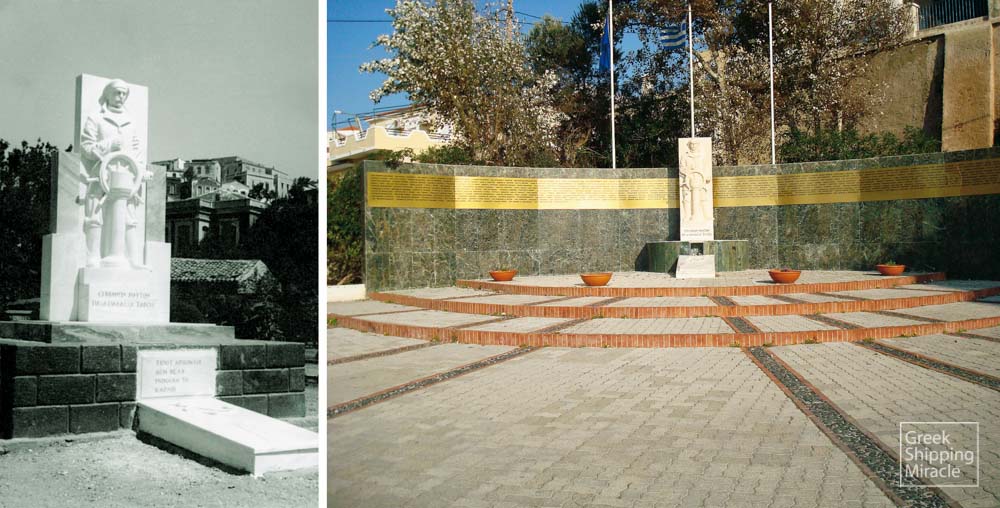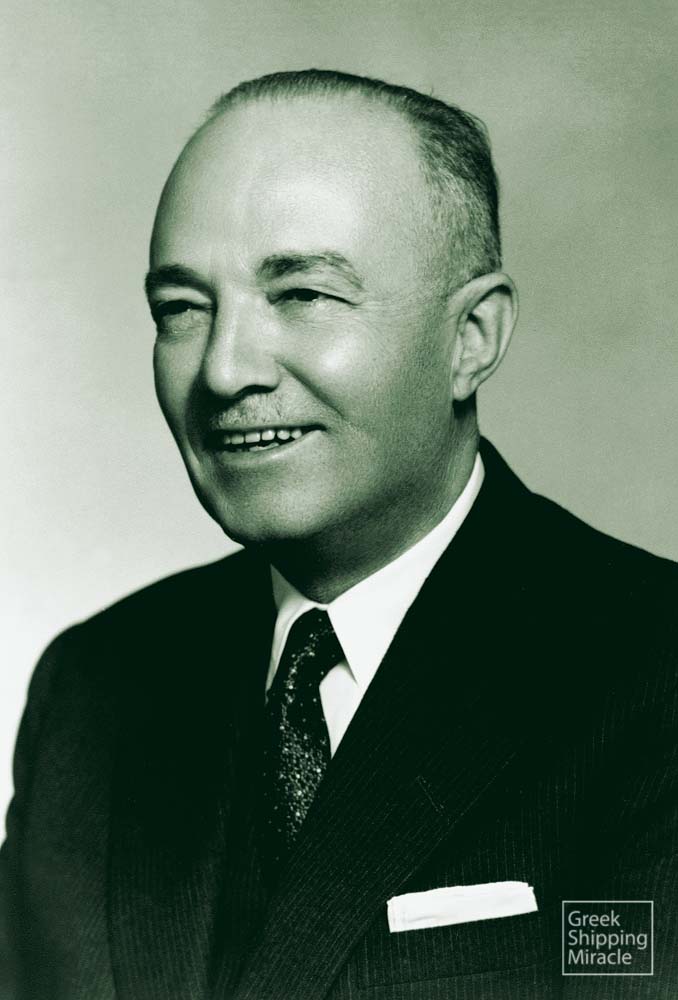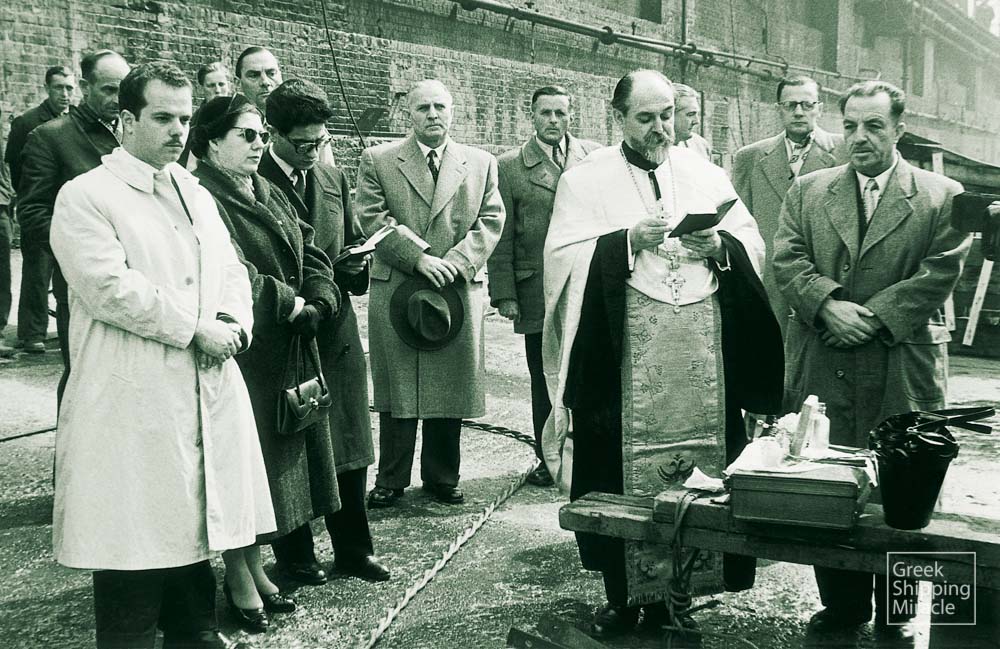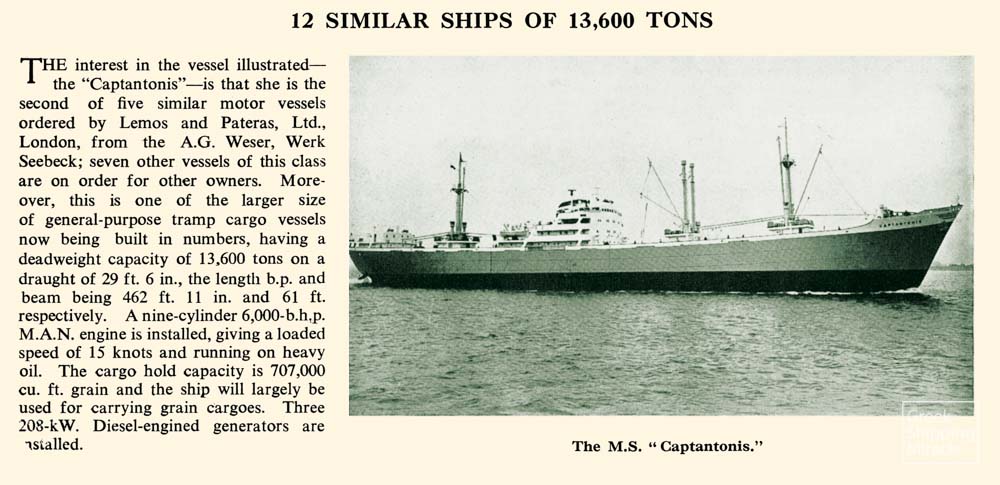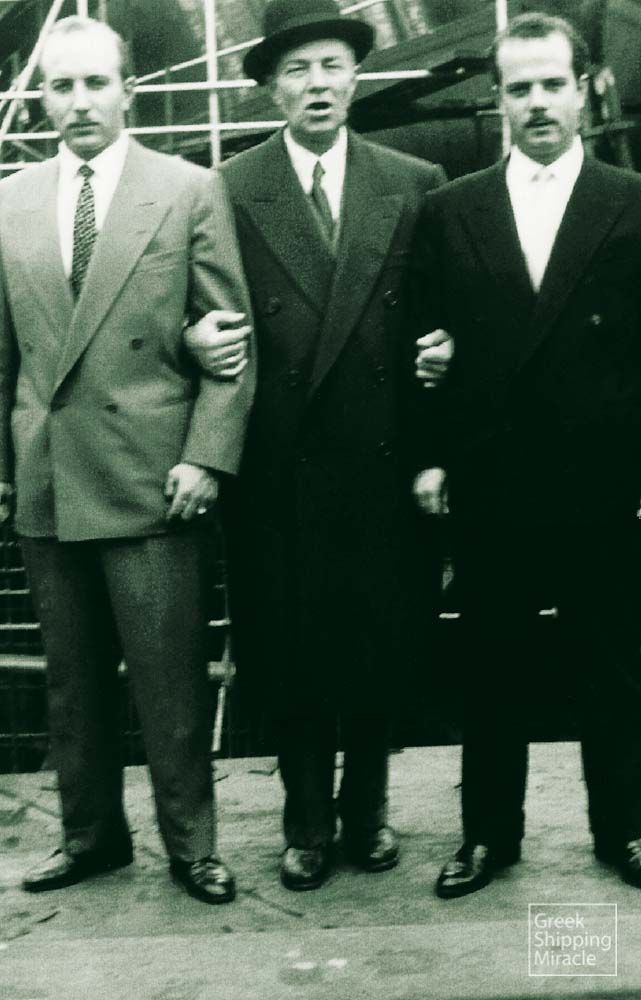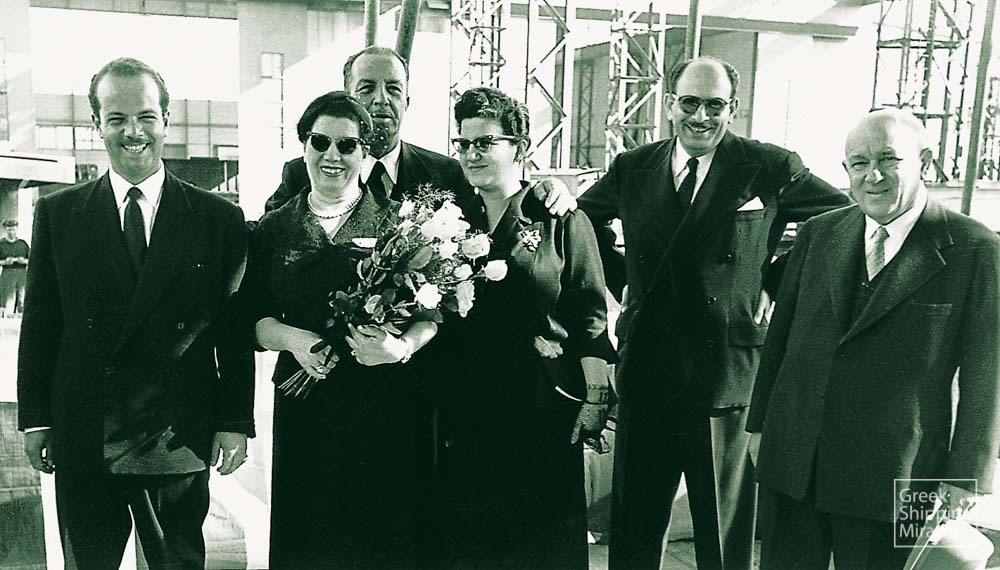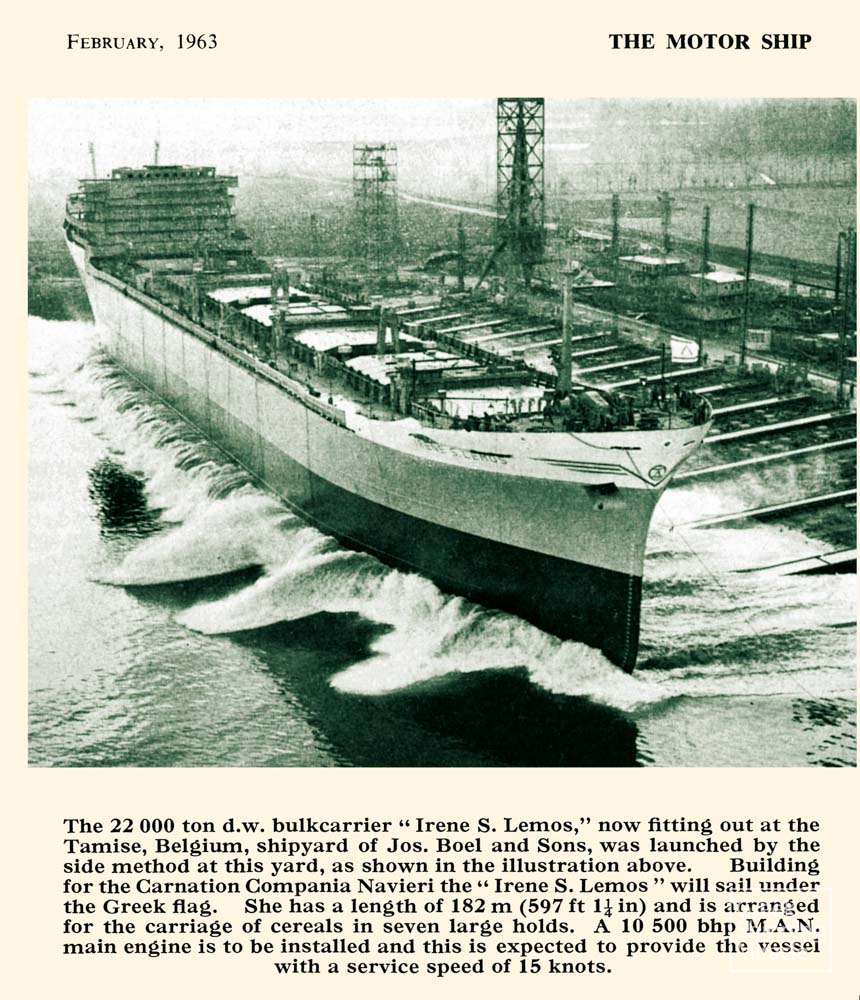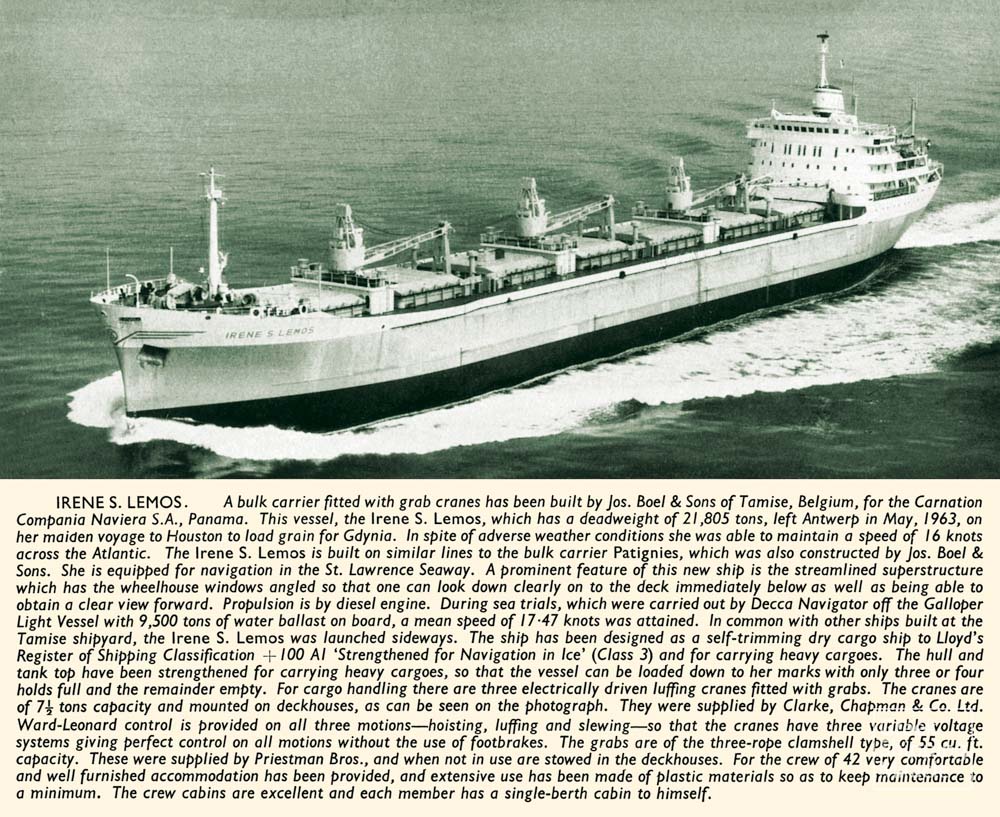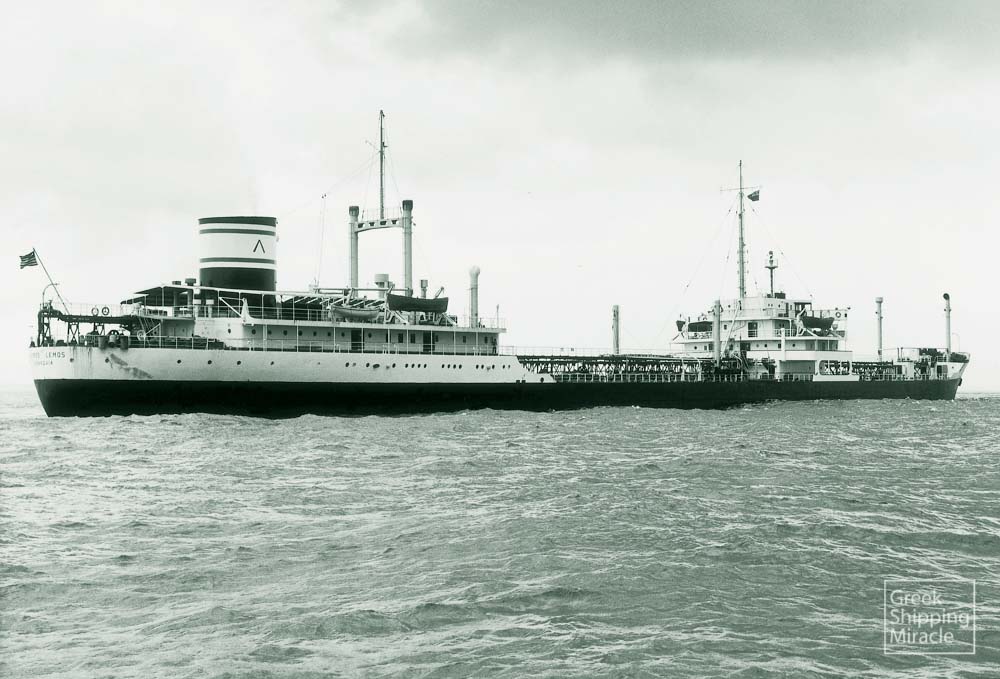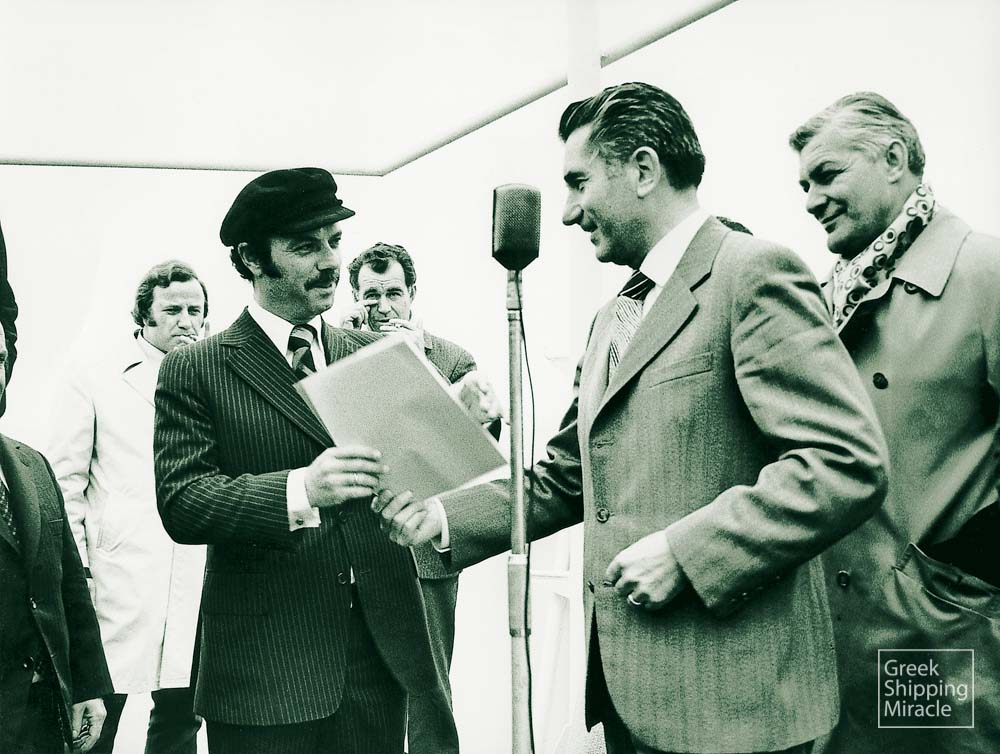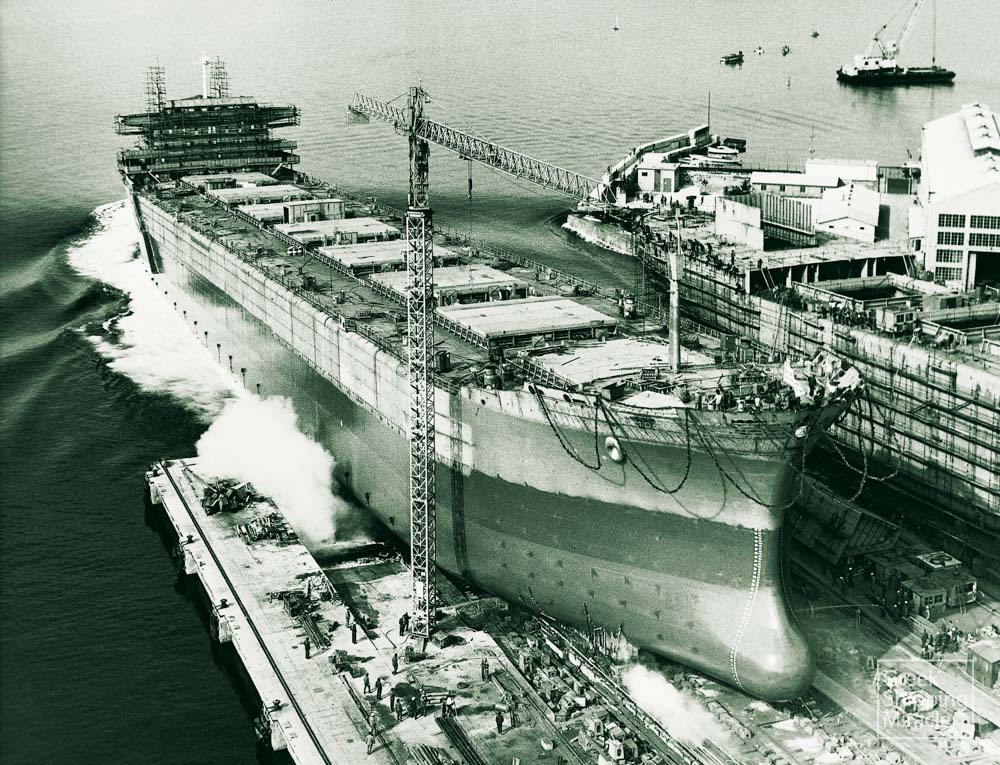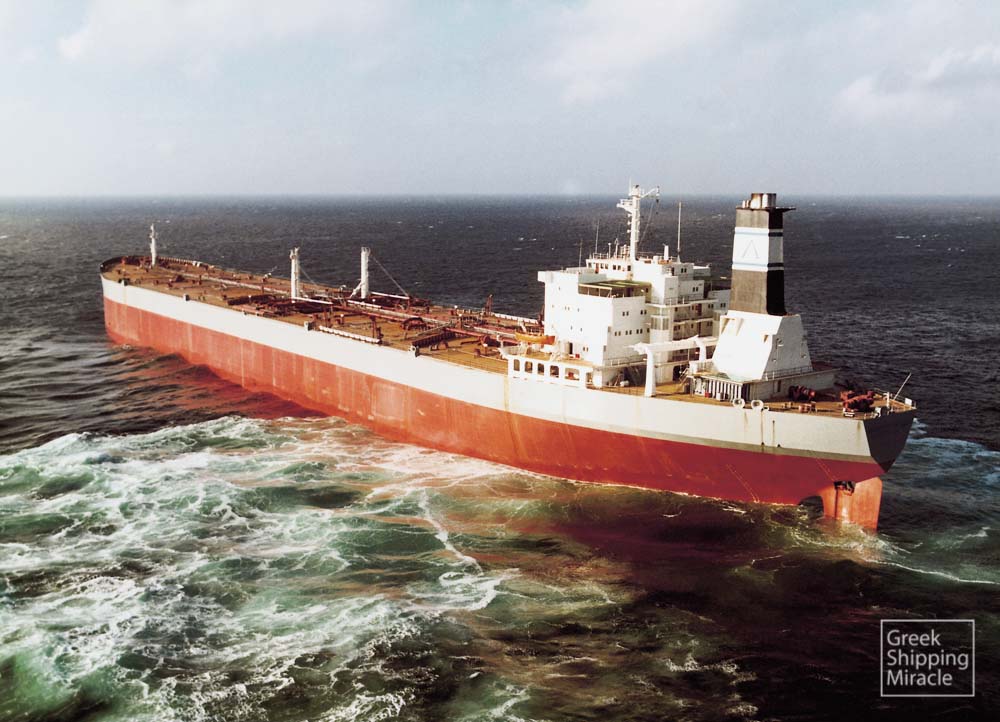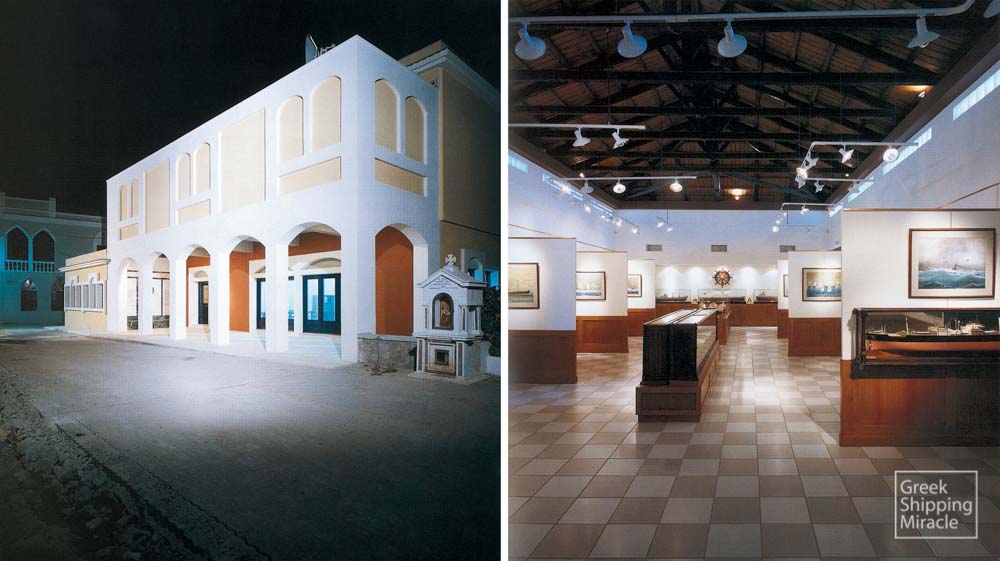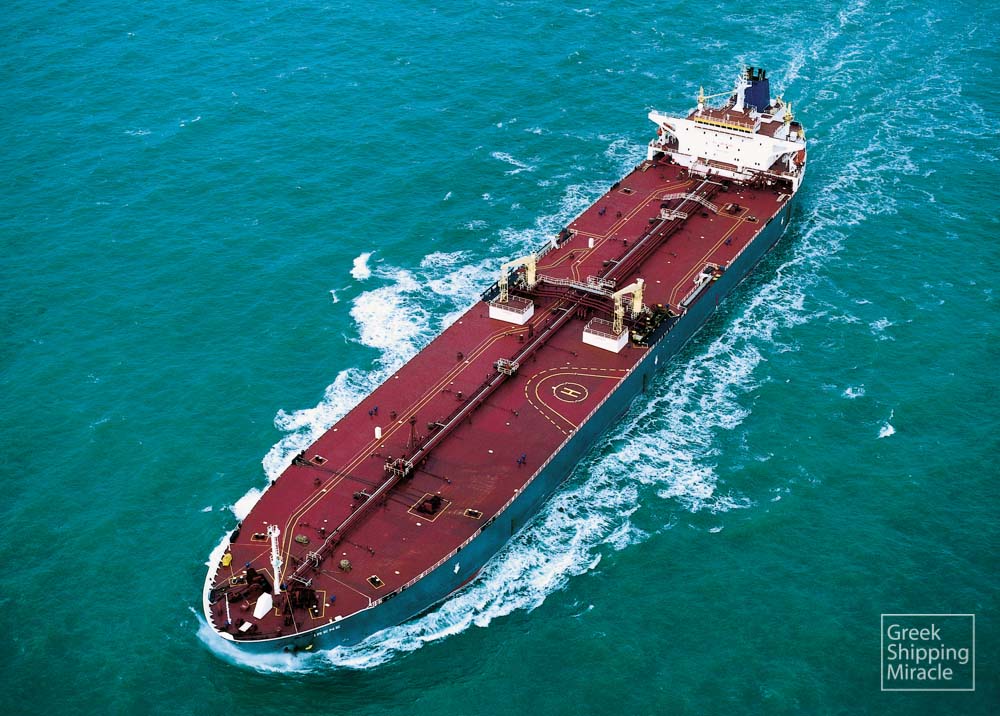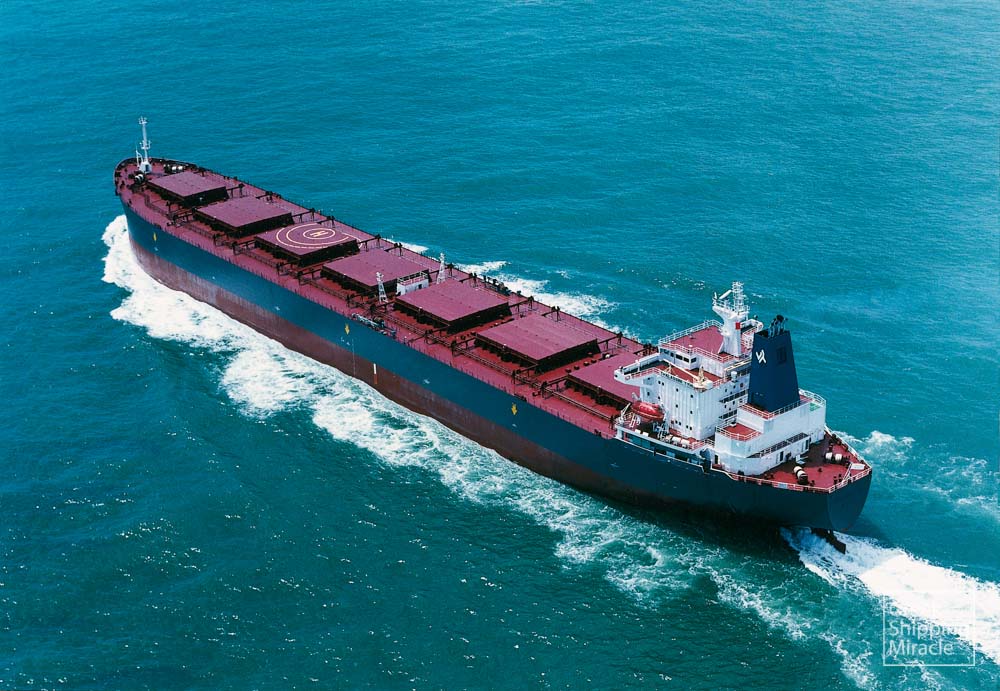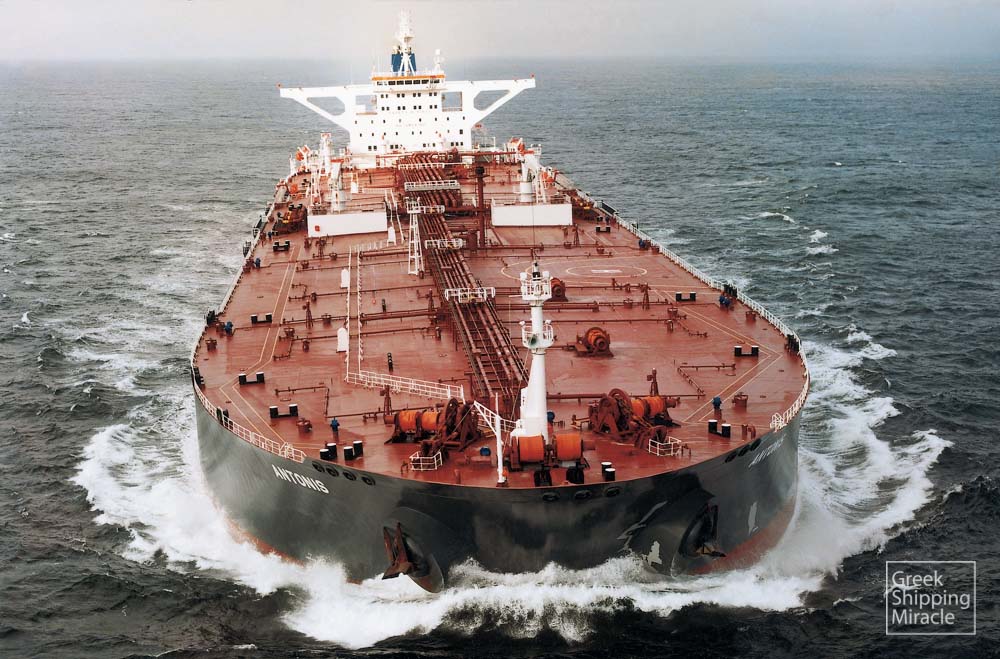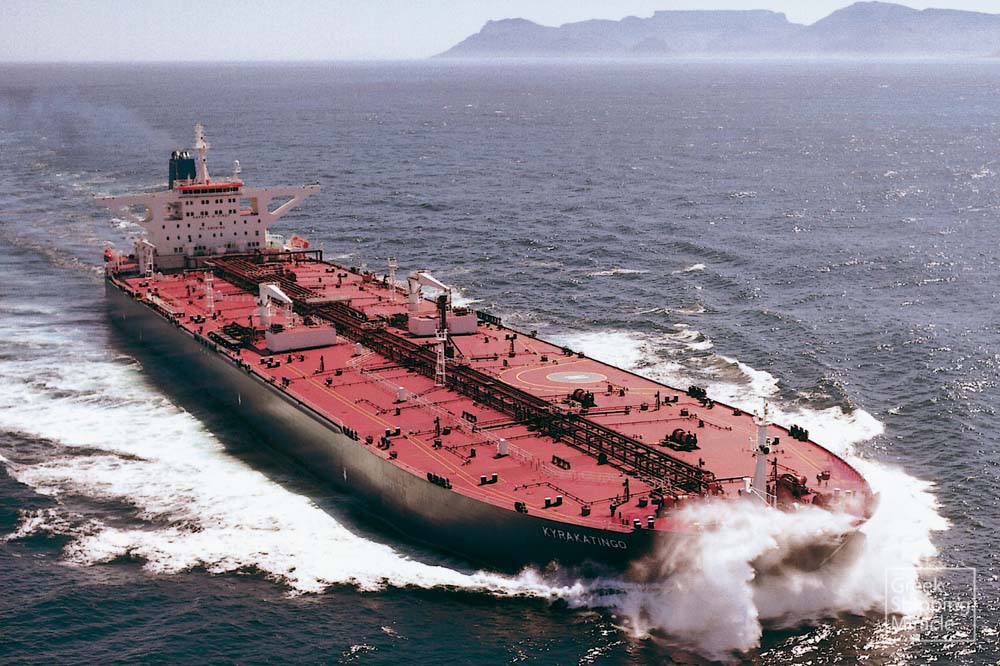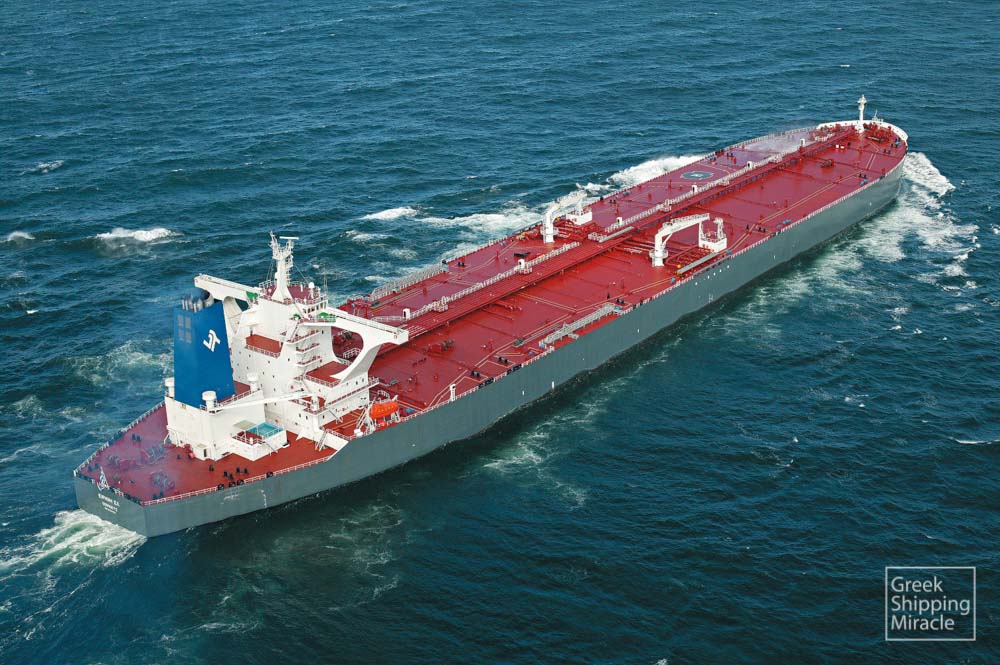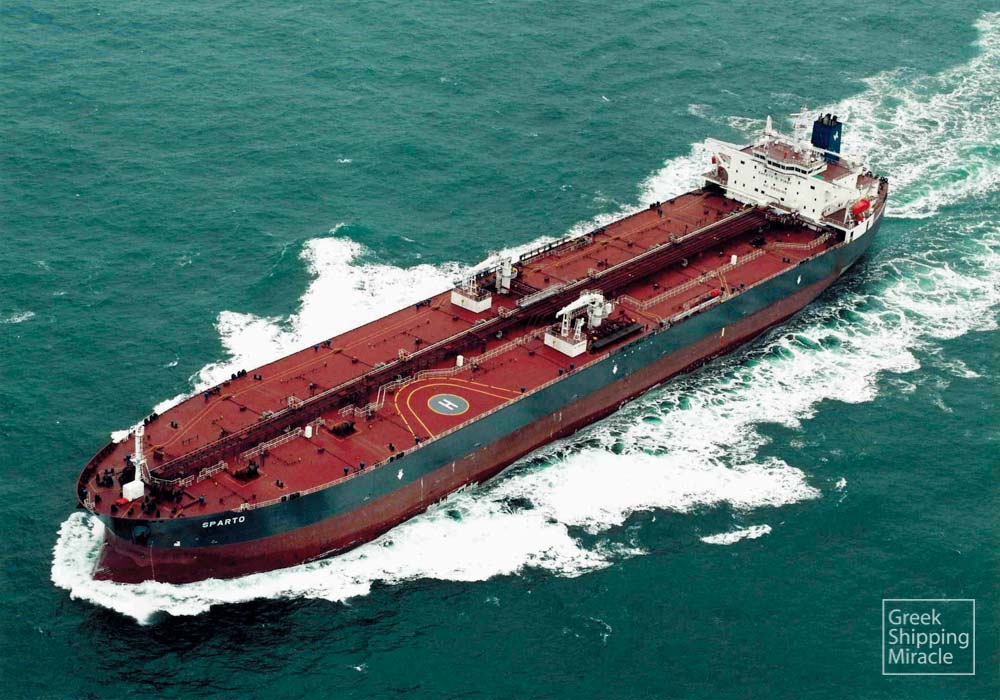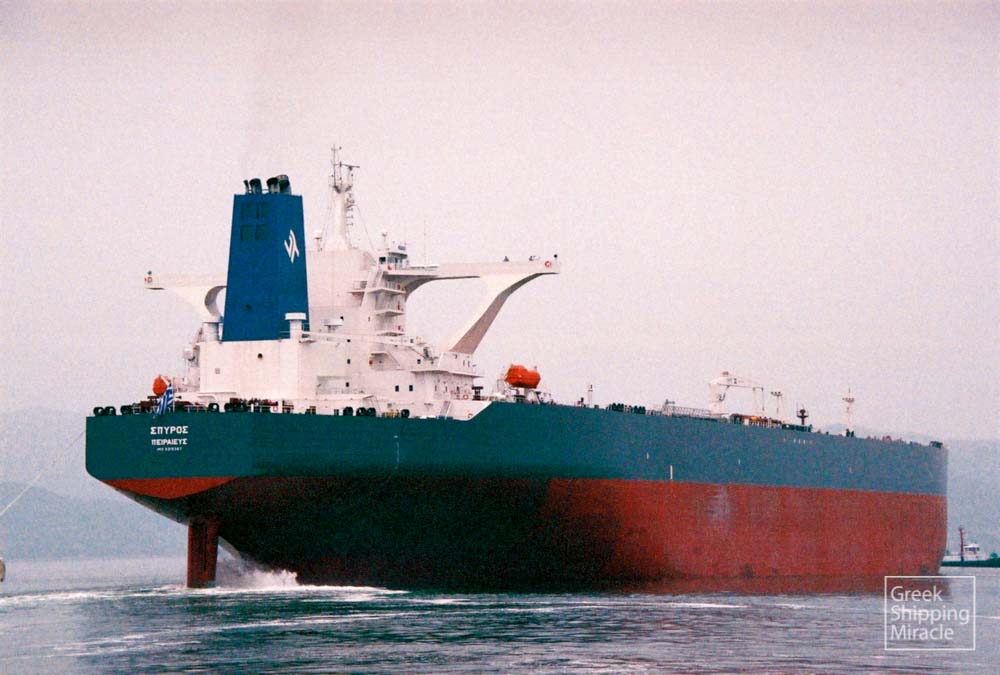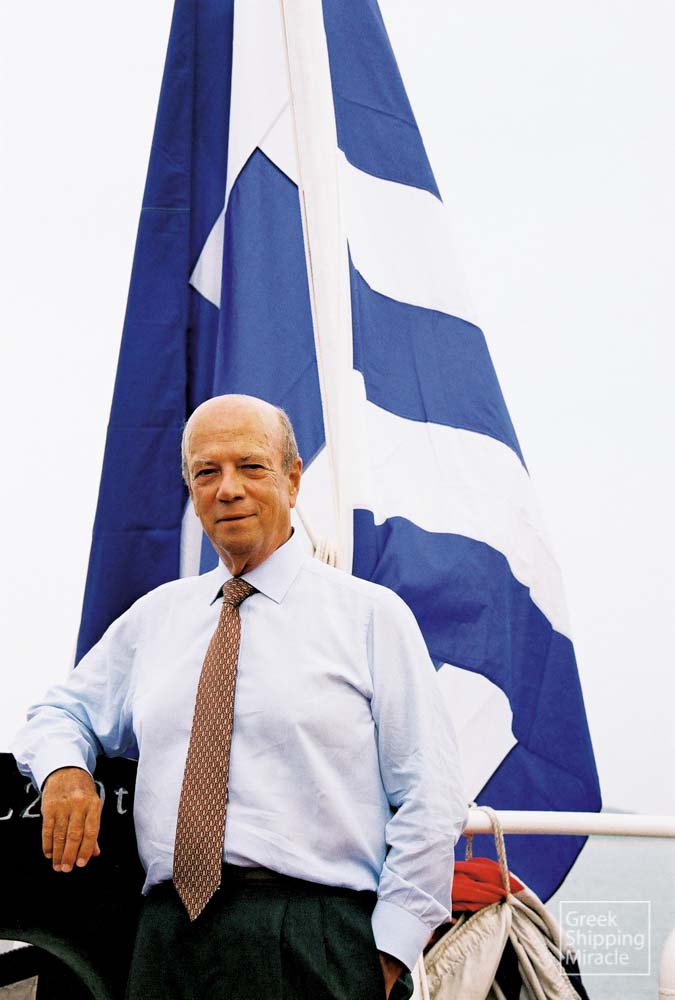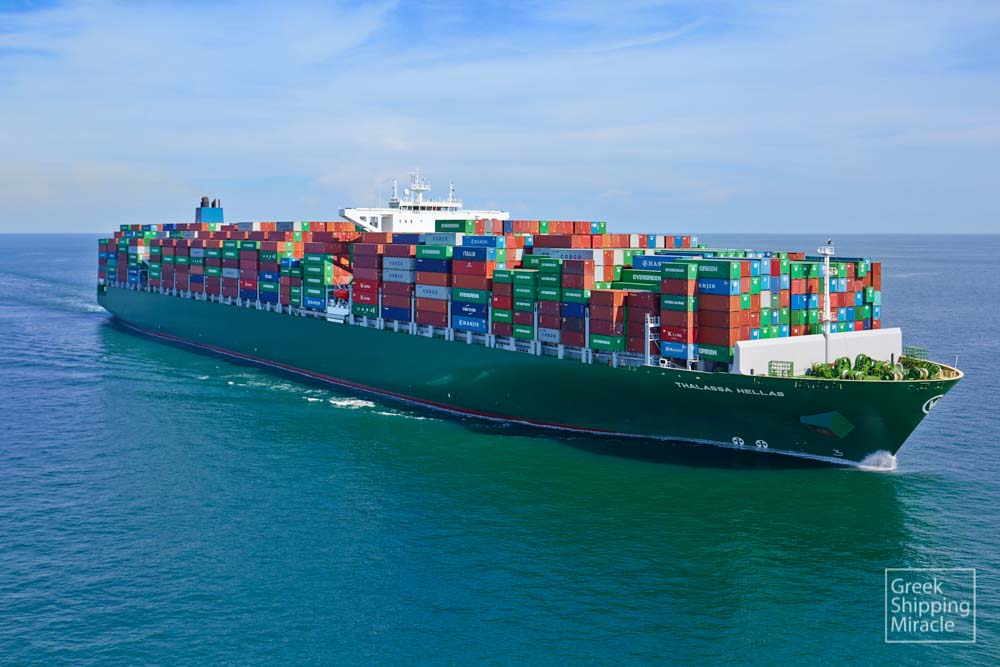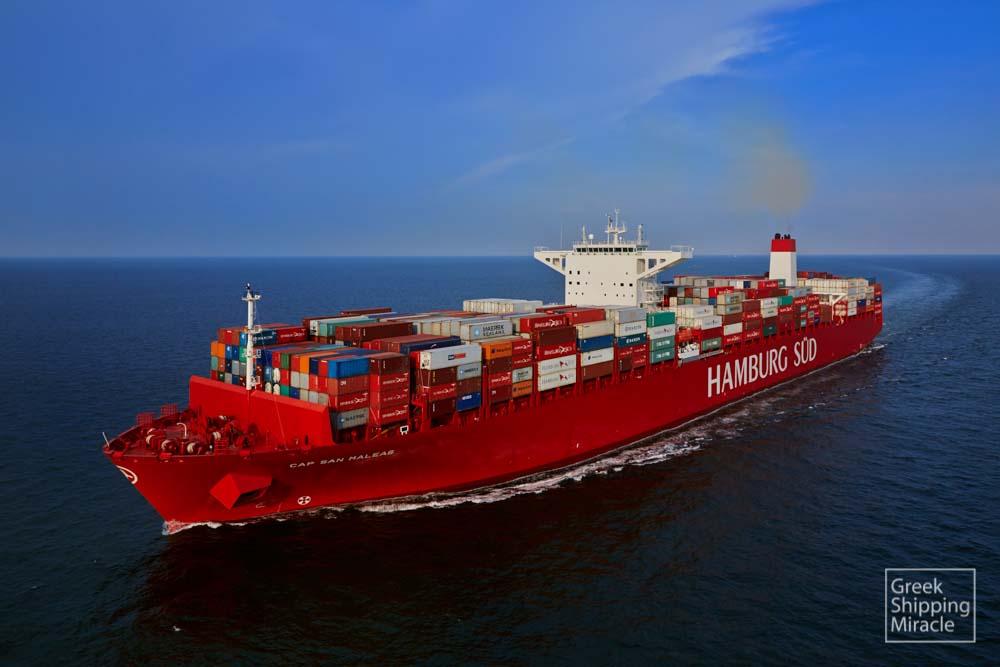Enesel S.A.
Enesel S.A. was founded in 2003 by Captain Nikolas S. Lemos, descendant of a family from the island of Oinoussai, with an almost two-century-long path in shipping.
One of the thousands of Greek seafarers who sailed before the 1821 National Revolution was Constantis Lemos, head of a family that was to play a leading role in both the Greek and international maritime arena over the course of the following two centuries. One of his sons, Georgios, born in 1812, was not only a successful seafarer and a shipowner in his own right from the 1840s, but was also ultimately to become priest, as well as the sole teacher of the island’s school, roles in which he offered great service to both his family and his fellow islanders.
Georgios Constanti Lemos, or “Papa-Lemos” as he was more widely known, lived through to 1892 and was blessed to see all three of his sons, Constantis, Antonios and Pantelis, becoming distinguished seafarers. The three brothers initially worked together and acquired, with their father’s assistance, a small share in the sailing ship EVANGELISTRIA, which belonged to their uncle Ioannis Lemos. This effort was well rewarded, as the brothers managed to accumulate cash and soon thereafter were able to acquire their own sailing ship. The year was 1882 and the sailing ship was the 250-ton AVRA, which was registered in Syros. Unfortunately, in 1884 whilst in Marseille serving as the master of the AVRA, the older son Constantis fell ill with cholera and passed away. Despite this heavy setback, the family business was continued by the two remaining brothers, Antonios and Pantelis.
In 1902, the family enterprise was wound up and Capt. Antonios G. Lemos started his own shipping business assisted by his sons. This new venture was marked by the acquisition in 1902 of the 800-ton sailing ship GAROUFALIA; bought from Ioannis Charopoulos, a master mariner from Galaxidi. Capt. Antonios G. Lemos took command of the vessel and managed to earn substantial profit from his investment, allowing him to further expand his business by acquiring another two sailing ships.
However, the sailing era was gradually coming to an end, due to the steady rise of steam power. Capt. Antonios G. Lemos quickly realised this development and felt it was time to acquire a steamship. In 1907, he asked the assistance of Leonidas Zarifis – one of the leading members of the Greek community in Constantinople. Zarifis, having already co-operated with other seafarers from the island of Chios, agreed to facilitate and sell to Antonios the steamship ELENI, which he had acquired in 1899 and was registered in Piraeus. Along with the ownership of the vessel, Antonios G. Lemos also undertook its management.
For the following five years, alternately under the command of Capt. Antonios G. Lemos, as well as that of his older son Dimitrios, the ELENI plied her trade. Antonios G. Lemos was steadily repaying his debts to Zarifis, when on March 12, 1912 disaster struck; the ELENI was wrecked off the coast of Marseille. The steamship was uninsured and Capt. Antonios G. Lemos lost all his wealth with her.
The Oinoussian Captain and shipowner returned home deeply affected by this tragedy; his life’s work was destroyed and he faced a very uncertain financial future. He decided to emigrate along with his two eldest sons to the United States. However, this was not meant to be; upon announcing his intentions to his wife Katingo, he was met with her abject refusal. She was a strong and dynamic woman – widely known as Kyrakatingo on their home island of Oinoussai – who over the years had not only managed the family’s domestic finances but had saved large amounts of the money Antonios sent home and with which she was meant to have run her household. As such, she announced that she had the means to help the family and at the same time she revealed some ceramic vases containing a variety of gold coins, hidden under their home’s wooden floorboards.
Thanks to his wife’s savings, Capt. Antonios G. Lemos embarked on a new journey, this time with the assistance of the Chian banker Theodoros Pangalos, based in Hermoupolis, Syros. At their meeting, Theodoros Pangalos did not feel that the coins saved by Kyrakatingo offered enough collateral to justify a loan to complete the purchase of a British-built steamship, identified by Antonios as an acquisition candidate. It seemed as though all was at a loss, but fortuitously Kyrakatingo had joined her husband on the trip to Syros bringing along her four sons, who were all at the meeting. It was at this impasse that Kyrakatingo looked towards Theodoros Pangalos asking what better guarantee there was than her husband and sons, all of whom were dedicated to the sea. Theodoros Pangalos agreed that there could be no surer guarantee and a loan was granted.
In appreciation of Theodoros’ faith in the family and the great help he had offered, the new steamship purchased in September 1913 was named THEODOROS PANGALOS. This purchase was made in partnership with another Oinoussian seafarer, Nicolas J. Pateras (also known as Spanogiannis), who took a 35% stake in the vessel. The ship proved to be an exceptionally lucky one, as she sailed the world’s oceans for almost four years and benefited from the dramatic increase in freight rates during World War I, bringing to her owners much profit. This successful venture, as with so many vessels of the day, came to a dramatic halt when on May 3, 1917, the steamship was torpedoed and sunk by the German submarine U53; even here though she continued being a lucky vessel as no loss of life was suffered. However, having learnt from past mistakes, the family had insured the vessel for 114,700 pounds, sevenfold more than had been paid for her only five years earlier.
In 1918, after a short illness, Kyrakatingo passed away and in her memory the family’s first ship acquired after the War was named after her. In August 1921, the family also purchased the steamship ANTONIOS. Neither of the ships was to prove lucky or profitable. The KYRAKATINGO sank on September 30, 1922, whilst the ANTONIOS suffered the same fate, from fire, a year later on September 15, 1923, following an explosion in her holds whilst carrying coal. The family suffered significant losses from both investments; in the first case alone they lost over 40,000 pounds as the ship was not insured.
Despite these setbacks, the family whose sole livelihood came from shipping, persevered in their chosen endeavour. Spyros A. Lemos, the third of the four sons, took the family helm basing himself in the UK and France, whilst trying to re-establish the family business on a solid footing. To this end, in 1924 a British steamship was acquired for 15,750 pounds and was renamed DIMITRIS. A year later, another steamship, the ANTONIS, was added to the family fleet. However, Antonis G. Lemos was not to enjoy the success of his four sons for long. On December 27, 1927 he passed away in a hospital on the island of Chios and was buried the following day in Oinoussai.
The next important business venture was the acquisition, in 1928, of a 17-year-old British-built steamship, which was renamed ANTONIOS G. LEMOS. A year later, in 1929, the family acquired a 20% share in another steamship that was purchased with their relative Georgios A. Georgilis. She was renamed PAPALEMOS and marked the last venture of what had been a difficult decade for the family. Under the circumstances, it had been a respectable performance; the start of the decade that was to come, however, would shake the world of shipping to its very core.
Capt. Antonios G. Lemos’ four sons were not discouraged by the financial crisis in the early part of the decade, managing to keep their fleet in operation during those difficult years. In July 1934, they acquired for a mere 9,000 pounds another steamship, the GAROUFALIA, which promised much for the family business, coming at a time when the shipping industry was recovering from a deep slump.
Unfortunately, an unexpected event was again to upset the plans of the Lemos brothers. On August 24, 1936, the ANTONIS G. LEMOS collided with the HMS KEITH, whilst on a voyage from Danzig to Buenos Aires; she sank but, fortunately, with no loss of life. However, this loss was to cause the family great damage as the sum for which she was insured was substantially less than the 22,250 pounds that was spent replacing her four months later with the 21-year-old steamship IOULIA NICOLAOU, which was renamed ANTONIS.
Shipping’s steady recovery in the coming years coupled with the dynamic performance of Greek shipping, including many Oinoussian families, encouraged Spyros A. Lemos along with representatives from three other families from his native island, Dimitrios Anastassiou Pateras, Ioannis Diamantis Pateras and Georgios Christou Lemos, to jointly establish a shipping office in London, in 1937. Until that time, the ships of the Lemos family used the services provided by the offices of Stavros G. Livanos, who acted as their agents. The decision to found an independent office was taken in Oinoussai, on May 16, 1937, when the four partners signed a memorandum of agreement for the establishment of Lemos & Pateras Ltd. A few months later, in July 1937, the new office was inaugurated in London. These four Oinoussians and W.M. Everett, a British citizen, were appointed as directors of Lemos & Pateras Ltd., which was to become the leading Oinoussian office in London during pre-war years.
As time went by, the specter of the War started looming large across Europe and in September 1939 the world was plunged into yet another nightmare. Although Greece remained neutral at the start of the War, Greek shipping had traditionally allied with the British and as such the Axis Forces had the fleet in their sights. One of the first victims of the Greek commercial fleet was the GAROUFALIA, which was torpedoed and sunk by the German submarine U38 on December 11, 1939, taking four members of her crew with her to the bottom of the sea.
Despite this heavy loss, the Lemos brothers went on to replace the lost steamship. As such, they agreed, in February 1940, to buy another steamship which was renamed DIMITRIS. However, the vessel had a similar fate as she was torpedoed and sunk by a German submarine four months later while Greece was still neutral.
On October 28, 1940, Greece entered the War and consequently Greek ships became even more of a target for the enemy. On January 6, 1941, the German warship KORMORAN sank the ANTONIS whilst on voyage from Barry to Rosario. All crew members were taken as prisoners of war. On May 29, 1941, the German submarine U107 torpedoed and sank the last steamship in which the Lemos brothers had an interest, the PAPALEMOS.
The prestige of the Lemos & Pateras Ltd. office earned since its establishment, enabled its co-founder, Spyros A. Lemos, to begin rebuilding the family fleet soon after the War. In early 1947, Capt. Antonios G. Lemos’ family, acquired the 1918-built British cargo ship BARRGROVE. The vessel was placed under Panamanian flag and was renamed GAROUFALIA. Immediately after, the family was able to acquire the Liberty-type cargo ship JOHN CONSTANTINE, which was renamed ANTONIS; she was one of the 98 Liberty-type vessels bought by Greek owners. It is worth noting that the initial name of the vessel was given in honour of John Constantine, a Greek Captain from the island of Kassos, who was the first pilot to transit a ship in the Panama Canal.
Over the next four years, Capt. Antonios G. Lemos’ family added another four Liberty-type ships to their fleet. All vessels were placed under Panamanian flag and they all contributed generously, along with the ANTONIS and the GAROUFALIA, to the family group. The Lemos brothers had, during the short period following the end of the War, laid the foundations on which further developments would be based in that first critical post-war decade.
In the meantime, John D. Pateras in 1951 and George Ch. Lemos in 1952, went their separate ways, establishing independent family companies under the names Diamantis Pateras Ltd. and G. Lemos & Brothers Co., respectively. The Lemos & Pateras Ltd. office continued its operation under the leadership of the Capt. Antonios G. Lemos and Anastassios D. Pateras families.
Just before the mid 1950s, Capt. Antonios G. Lemos’ family approached shipyards for the first time in the family’s history, entering into an agreement in 1954 with the German shipyard A.G. “Weser” in Bremerhaven for the construction of two cargo ships. The vessels were delivered in November 1956 and August 1957 and were named KYRAKATINGO and CAPTANTONIS, respectively. The first one was placed under Greek flag, whilst the second was registered in Liberia. This important milestone in the family’s history was unfortunately marked by the loss of two of the four sons of Capt. Antonios G. Lemos. The eldest son Dimitrios passed away in 1956 and the second Pantelis a year later. In 1959, Nikolas S. Lemos, representing the family, began a new chapter in the family’s history, establishing in Piraeus a representative office, Avra Shipping Agencies Company, which operated under the management of Polydoros A. Lemos, Nikolas S. Lemos and John Psimmenos, the husband of Lukia D. Lemos.
At the beginning of the 1960s, more specifically in January 1961 and in November 1962, the family took delivery from A.G. “Weser” of two more ships, the DIMITRIS and the POLYDOROS. Both ships were placed under the Greek flag, while in 1961 the family began adding a number of second-hand ships to its fleet.
In 1962, the man who had successfully managed the family business for four decades, Spyros A. Lemos, passed away. Polydoros, the last surviving son of Capt. Antonios G. Lemos, was joined by a new generation; the sons of Spyros Lemos, Antonis and Nikolas, as well as the son of Dimitrios Lemos, Marcos.
In April 1963, Capt. Antonios G. Lemos’ family added one more high-specification newbuilding to its fleet, the bulk carrier IRENE S. LEMOS, 21,805 dwt, built by J. Boel & Fils S.A. in Belgium. She went on record as the first ship of her size to be constructed with crab cranes. During the next couple of years, the family added another four second-hand ships to their fleet, which were all placed under the Greek flag. In October of the same year, the family entered a new sector of marine transportation by acquiring their first tanker, the 20,000-dwt Dutch vessel PENDRECHT, which joined the Capt. Antonios G. Lemos’ family fleet as the SPYROS LEMOS.
From 1966 to 1970, six second-hand cargo ships were added to the family fleet and were all placed under the Greek flag. Concurrently, the family business enhanced its presence in the bulk carrier sector by placing an order for the construction of a 55,000-dwt bulk carrier at the Swedish shipyard Uddevallavarvet. The vessel was delivered in 1968, as the Greek-flagged SPYROS A. LEMOS, the first Greek-owned ship to be built under the supervision of Det Norske Veritas.
The growth of the company continued during the 1970s, with the Lemos & Pateras group remaining solely under the control of Antonios and Nikolas S. Lemos and Marcos D. Lemos, following the passing away of their uncle Polydoros A. Lemos in 1970. Three more second-hand cargo ships were acquired in 1972, the last classic-type cargo ships to join the family’s fleet. In August 1972, the bulk carrier MARITSA P. LEMOS, 31,329 dwt, was delivered from the Yugoslavian shipyard “III Maj” at Rijeka. A year later, the family established in Piraeus the office of Lemos & Pateras (Hellas) Ltd., managed by John Psimmenos, whilst Avra Shipping Agencies Company ceased its operation.
By the end of the 1970s, the group’s growth was notable. In 1973, three second-hand bulk carriers were acquired, whilst two more, the DIMITRIS A. LEMOS and PANTELIS A. LEMOS, 74,212 dwt each, were delivered from “III Maj”. A year later, the panamax bulk carrier PETINGO and the ore/bulk/oil carrier ANTONIS joined the group’s fleet.
In May 1976, the family acquired the first ship in its history to exceed 100,000 dwt. She was the British ore/bulk/oil carrier VIANNA, constructed in Sweden, renamed SPYROS A. LEMOS and placed under the Greek flag. The group’s fleet was further expanded with the addition of two more second-hand bulk carriers, acquired during the time. An important milestone in the group’s history was also reached with its first newbuilding tanker, the 150,000-dwt THALASSINI DOXA, built by the Swedish shipyard Götaverken and delivered in October 1977.
The family’s fleet was further expanded in the last three years of the decade, when more second-hand ships of a young age were acquired. In particular, from June 1978 until August 1980, seven second-hand ships were acquired and were all placed under the Greek flag. Among these, in July 1979, the first VLCC in the history of the group; she was the 7-year-old GONDWANA, 218,098 dwt, renamed SPYROS A. LEMOS. With a fleet of approximately 1,000,000 dwt, Lemos & Pateras Ltd. was at the time among the most powerful Greek shipping groups.
The early 1980s showed clearly that the crisis would deepen. The family of Capt. Antonios G. Lemos, however, was not overly exposed, having no new acquisitions. In 1983, the sons of Spyros A. Lemos, Antonis and Nikolas, decided on friendly terms to go their separate ways, as far as their business interests were concerned. The oldest of the brothers, Antonis, kept along with his cousin, Marcos D. Lemos, full control of the Lemos & Pateras Ltd. offices in London and Piraeus, while the younger brother Nikolas, founded N.S. Lemos & Co. Ltd. in London, with a representative office in Piraeus named Avra Shipmanagement S.A. It was the beginning of Nikolas S. Lemos’ independent course that was to follow a remarkable career during the next 30 years.
Despite the fact that the crisis was continuing to deepen in the shipping industry, both groups opted to place orders for the construction of newbuildings in order to expand their fleets. The Antonis S. Lemos’ led group acquired a 2-year-old bulk carrier, 61,336 dwt, which was renamed SPARTO. Furthermore, he placed an order for the construction of two 40,000-dwt bulk carriers at Hitachi shipyard in Japan. Nikolas S. Lemos, heading his new venture, ordered four multipurpose bulk carriers, 23,500 dwt each, at the Veb Mathias-Thesen-Werft yard in East Germany. The above six vessels were gradually delivered and joined the two fleets over the course of 1984 and 1985.
On October 30, 1986, Antonis S. Lemos suddenly passed away at the age of 56 following a heart attack. Without leader, the historic Lemos & Pateras Ltd. group faced the unexpected challenge of having to fight for its survival in the midst of a deep financial crisis and with heavy loan obligations to fulfill. During this period, Nikolas S. Lemos approached the lending banks of his late brother’s group. He expressed his desire to prevent the auctioning of ships under the control of the historic family establishment of Lemos & Pateras Ltd. and subsequently reached an agreement under which he assumed the debts of Lemos & Pateras Ltd. and those of his brother. It was a daring decision, taken to preserve the family’s reputation. However, the move proved extremely positive for the group, as a few months later the shipping market was well on its way to recovery.
Meanwhile, the N.S. Lemos & Co. Ltd. group, in anticipation of market developments, had as of mid-1986, begun to diversify its interests by investing in ships of greater carrying capacity. These ships were purchased at low prices due to the crisis, which was by now in full swing. Under these circumstances, the group acquired the bulk carriers THALASSINI AVRA and KYRAKATINGO, 129,237 dwt and 61,826 dwt respectively. Concurrently, taking into consideration the interest of Russians in small-sized multipurpose bulk carriers, the group sold, during the last months of 1986, three out of their four newly-built bulk carriers, which had been constructed in East Germany. This resulted in the overall reduction of the group’s debt exposure and the improvement of its cash flow position. Consequently, the group was able to take more opportunities in acquiring additional low-priced second-hand tonnage of a young age. In the following year, two more bulk carriers over 100,000 dwt each were acquired. These were the 1977-built SOUTHERN GALE and the 1981-built IBERIA, which were renamed THALASSINI TYHI and PANTELIS A. LEMOS respectively. Furthermore, in 1987, another ship, the ore/bulk/oil carrier FRIENDLY CARRIER, built in 1974, was added to the fleet and renamed THALASSINI NIKI.
The Nikolas S. Lemos group of companies not only managed to overcome the crisis successfully, but was also one of the first to return to shipyards with newbuilding orders in the early 1990s. The group’s long-term target was the entire replacement of its fleet with a new generation of double-hull tankers, as well as large bulk carriers, with high technical specifications. At the same time, the group implemented a plan to gradually sell all second-hand units acquired in previous years. This target was fully accomplished with the sale of the group’s last second-hand vessel, the PANTELIS A. LEMOS, in 2002.
In late 1993, Nikolas S. Lemos was the first Greek to place orders with Samsung Heavy Industries in South Korea in a deal concerning the construction of two double-hull aframax tankers and two panamax bulk carriers. The tankers IRENE and SPYROS were delivered in 1994 and 1996 respectively and were placed under the Greek flag. Meanwhile, the bulk carriers THALASSINI TYHI and THALASSINI NIKI were delivered in 1994 and were registered in Cyprus.
Immediately after the delivery of the above mentioned bulk carriers, the group placed an order with China Shipbuilding Corporation in Taiwan for the construction of a capesize bulk carrier, which was delivered in 1996. In February 1997, the N.S. Lemos group was the first Greek shipping group to place an order in China for the construction of a ship. However, the vessel, a 105,000-dwt product carrier built by New Dalian shipyard, was not delivered to the group due to a damage in the main engine during shop trials, resulting in the cancellation of the order. Later on, in 1999, a new order was placed with China Shipbuilding Corporation; this was for the construction of three capesize bulk carriers, which were delivered in 2001 and 2002 as the THALASSINI AVRA, THALASSINI DOXA and THALASSINI KYRA.
A few months shy of the new millennium, the group pressed ahead with the most important newbuilding order in its history until that time, the building of two VLCCs at the Samsung Heavy Industries facility in South Korea. The ships were delivered in 2001 and 2002 and were named ANTONIS and KYRAKATINGO respectively. Furthermore, in April 2002, two ice-class aframax tankers were ordered at the same shipyard, the SPARTO and the PANTELIS. In December 2002, the group contracted the building of two more VLCCs at another major shipyard in Korea, Hyundai Samho Heavy Industries Co. Ltd., delivered in 2004 and 2005 as the IRENE SL and the SPYROS respectively. The above deal was further enlarged in 2004, through an agreement for the construction of a third VLCC. The following year, the group got delivery of a double hull capesize bulk carrier, the THALASSINI NIKI, built by Daewoo Shipbuilding in Korea.
In May 2007, just before the delivery of the third newly-built VLCC, the SPYROS, Enesel S.A. placed an order for the construction of three 59,000-dwt supramax bulk carriers at SPP Shipbuilding Co. Ltd. in Korea; the vessels were delivered in 2010 as the THALASSINI AXIA, THALASSINI NIKI and THALASSINI KYRA.
In 2011-12 and after Enesel had once again started selling its entire bulk carrier fleet, the group made a landmark investment in another maritime sector, that of containerships. A multiple order was placed for 14 innovative ships – 10 of them with carrying capacity 14,300 teu each and four of 10,600 teu each. All 14 vessels were delivered by Hyundai Heavy Industries at Ulsan, South Korea in 2013 and 2014 and were placed under the management of a subsidiary part of the group.
Beyond its long presence in shipping, Nikolas S. Lemos’ family has demonstrated noteworthy social and cultural activity. In 1961, the Scientific Wing of the Rheumatology Clinic in the Asklepieio Hospital of Athens was inaugurated, following a donation by Spyros A. Lemos. He had previously sponsored, in 1952, the Monument of the Unknown Seafarer in the island of Oinoussai, a work by sculptor L. Lameras, the first monument in Greece dedicated to Greek seafarers. Placed in the central square of Seamanship, the monument stands in its present form since 1984, when the site was fully renovated following a donation by Spyros A. Lemos’ sons Antonis and Nikolas. Finally, in 1991 the Oinoussian Maritime Museum was inaugurated at the expense and support of Nikolas S. Lemos, who endeavoured through this initiative to set the foundation for the preservation of the maritime legacy of his homeland.

